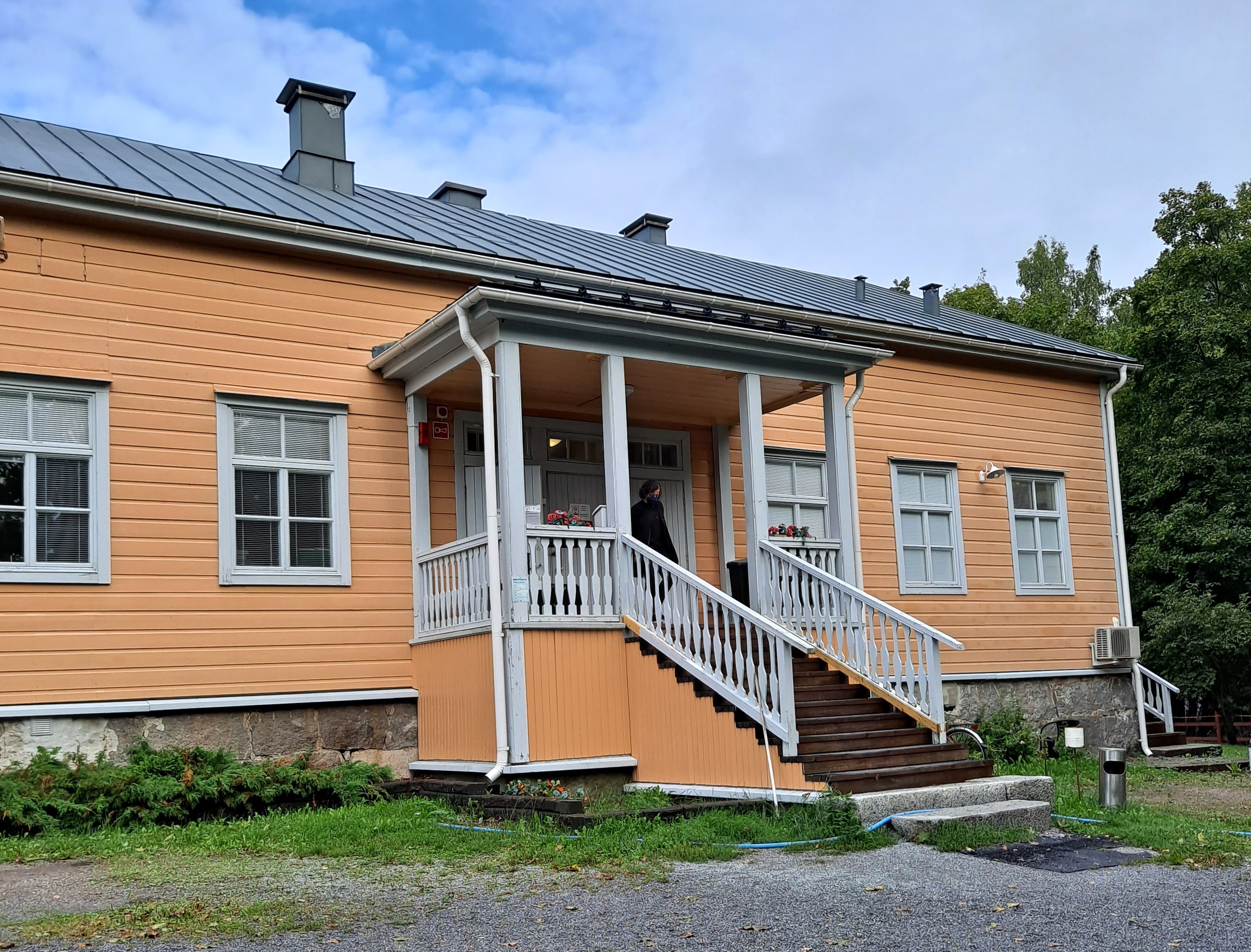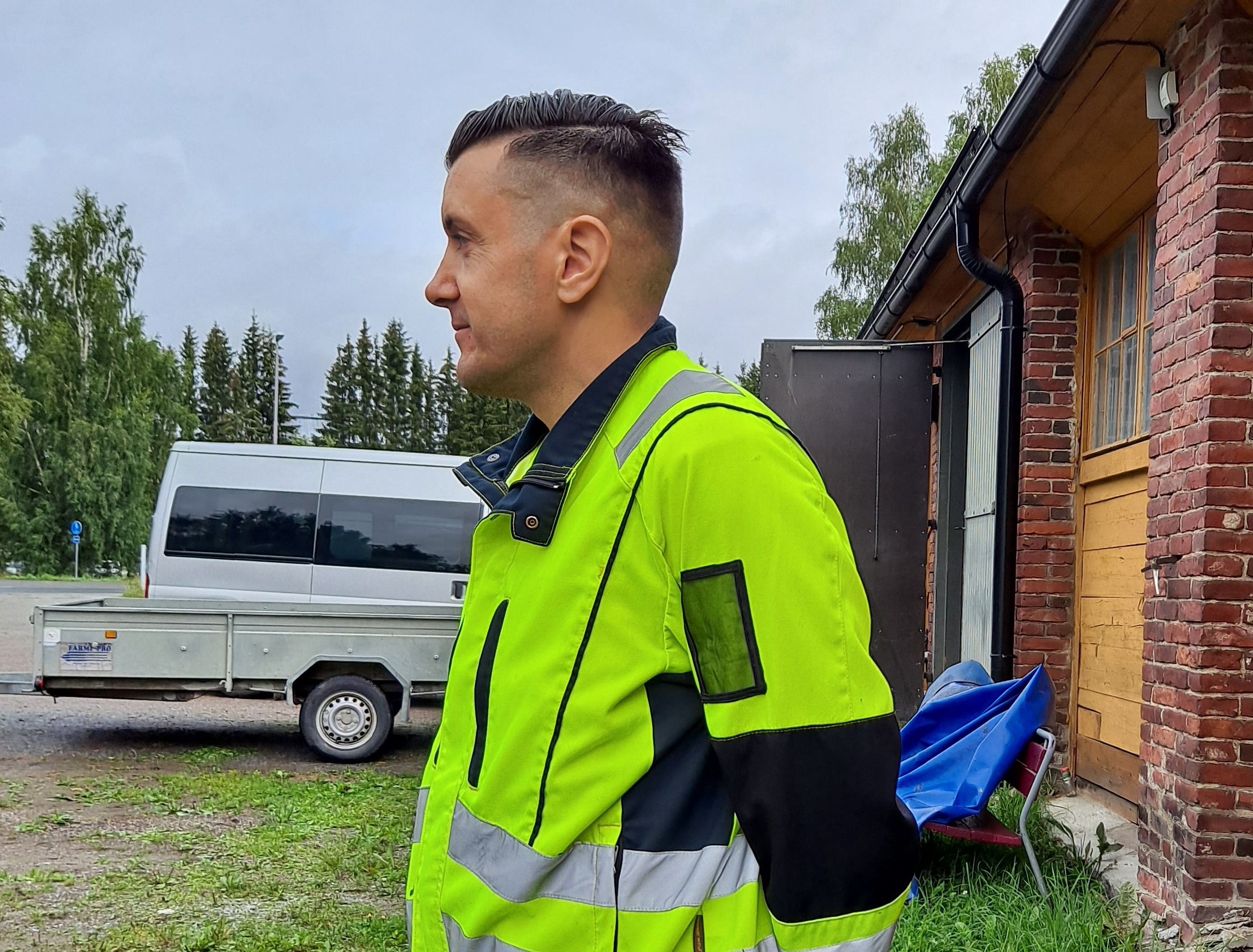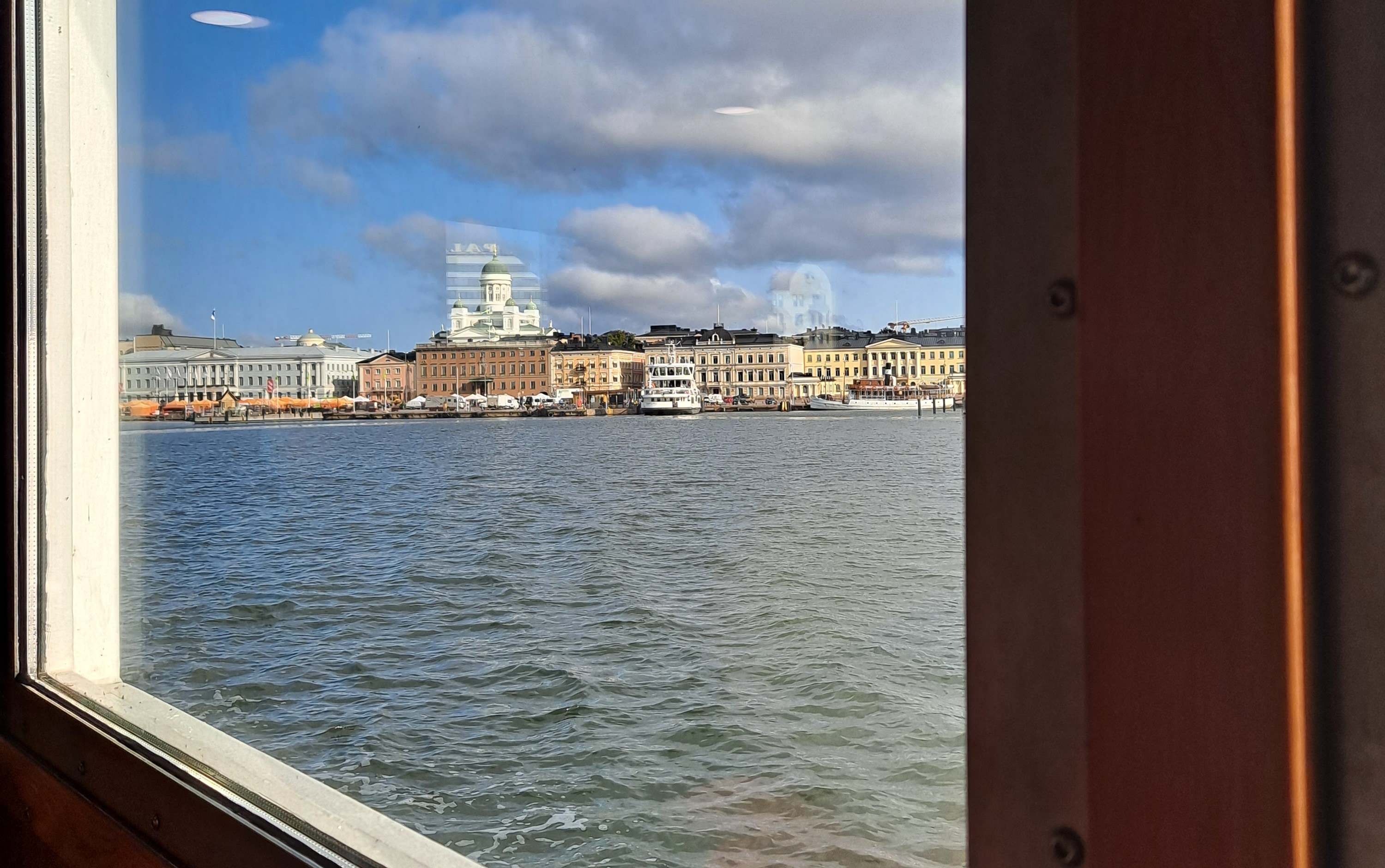I can’t remember when I first heard about open prisons in Finland, but I was immediately intrigued that a criminal justice system allowed inmates to leave for work or school. And I wondered how to connect that to Chicago, which lies at the center of the prison abolition movement in the United States.
Prison abolitionists imagine a society that does not put people in cages; it’s a political movement that argues prisons in the U.S. can’t be reformed and that the whole system should be dismantled. By definition, open prisons are not abolitionist, but they are reimagining imprisonment.
Mass incarceration, racism and punishment define the U.S. prison system, which has the highest prison population in the world. Since 1970, it has grown tenfold to 2 million people. Meanwhile, Finland has one of the lowest prison populations in the world — the number hovers around 3,000 — and one-third of its prisons operate as open.
I traveled to Finland for a few weeks in August to report on open prisons. I learned the model is seen as successful because it hasn’t led to a rise in crime. Rehabilitation is the philosophy.
Hämeenlinna, a town in southern Finland and an hour train ride away from Helsinki, is home to Vanaja men’s prison.
A former worker’s colony, Vanaja became an open prison in the 1990s. Next door is a farm and one of the prisoners is a caretaker of the sheep. The land is sprawling green and the 50 prisoners walk unattended. The men imprisoned there wear electronic monitors but no chains. There are no cages and no locks. The white two-story building that houses them resembles a dorm or a hostel. The other building is red and ranch-style. I couldn’t go inside because of COVID-19 restrictions.
Open prisons allow inmates to leave for schooling or a job. Wraparound services include a social worker and classes on substance abuse or anger management. Due to its small population, the facility offers the men individual guidance.
Every meal is cooked by inmates, and every Friday an unmarked white van ferries them to the grocery store. Prisoners have cell phones and bank accounts. They do their own laundry and even order takeout pizza.
Kaisa Tammi-Moilanen is the prison director.
“We do not want them to be packed together and spend the whole day with us only. We believe that’s not the best idea. And since we are focusing on getting them back to society, we are focusing on releasing them as soon as it’s possible,” Tammi-Moilanen said.
Earlier that morning, a group of seven men left in that white van for work. They drilled park benches for the city of Hämeenlinna, earning more than four euros an hour. The prisoners wore neon yellow municipal uniforms just like other city employees including the supervisor in charge, who isn’t a prisoner.
“There’s no obstacles for running away, if you want. So it’s not very prison[-like]. There’s no bars for the windows,” said 44-year-old Christian, who has been in Vanaja since December of last year for bank scamming.
Later that day, he exercised in the prison gym and microwaved meatballs for dinner. At night, Christian studies languages.
The Finnish penal system doesn’t make a distinction between violent and nonviolent crimes the way the U.S. does when doling out second chances. Open prisons are for those who’ve committed white-collar fraud and homicide. Mika, for example, is serving a life sentence in Vanaja for murder. A life sentence is 15 years with parole eligibility after having served 12 years. Mika was transferred to the open prison from a closed one for good behavior and sobriety. He plans to be a gardener once released.
Listen to the full series:
“In Finland, the politicians don’t have that much conversation about criminal policy. And that’s a good thing. God forbid,” exclaimed prison director Tammi-Moilanen.
My two biggest takeaways from visiting Finland’s open prisons are that researchers guide prison policy and the system used to be less humane.
In the 1800s, Finland — like other countries — supposed solitary confinement would control the prisoners through penance and religion. Overcrowding and harsh conditions remained until after World War II. An effort to humanize the Finnish prison system has been decades in the making, first with worker colonies.
The 1970s is an important divergence. In the U.S., policymakers scored political points by getting “tough on crime” and declaring a War on Drugs. They cemented excessive punishment in a system that has devastated Black and brown communities with mass incarceration. Meanwhile, Finland adopted open prisons and saw its prison population plummet.
“Every piece of legislation, which is drafted on criminal justice, is prepared by civil servants who have a strong research background,” said Tapio Lappi-Seppälä, a professor of criminal law and criminology at the University of Helsinki.
The leading scholar said very few politicians in Finland build their political career around crime. And 1960s research found “we could really anticipate and assume that even if we do major changes with our prison system, that will not have a serious effect on the crime rates.”
Open prisons give inmates contact with the outside world and an environment that makes it easier to transition back into society. Lappi-Seppälä said taking away someone’s liberty is punishment enough.
In a book he edited, Crime and Justice in Scandinavia, a key difference between the U.S. and Finland is illustrated. Neighborhood watch programs in the U.S. emphasize surveillance and reporting of suspicious activities to the police. The Nordic emphasis is on joint neighborhood activities and mutual assistance.
Gun crimes are low in Finland because guns must be registered and licensed on a per-gun basis. Most are used for hunting. Firearms are used in just 14% of homicides; knives are the most common weapon.
“There is very strong comparative evidence showing that if there is any single factor that explains lethal violence, it is income differences and social differences,” Lappi-Seppälä said.
Finland is a social-welfare state offering, in many ways, a stress-free system to navigate unlike the labyrinth in the U.S. In Finland, health care, child care, elder care and parental leave are generously provided. College is free. The mentality behind those public policy choices also informs Finland’s prison system, which reflects the spirit of this society.
I read The Nordic Theory of Everything: In Search of a Better Life by Anu Partanen to understand the morality of a country that takes such a different — and less punitive — approach than the U.S. when it comes to criminal justice. I reached out to her, and we met at a popular food hall in Helsinki where the smoked salmon is as charred and delectable as South Side Chicago rib tips.
“In Finland, and in the other Nordic countries, there’s very strong public taxpayer-funded social services, which include paid parental leave for parents so that they can be there and present for babies. It includes affordable subsidized day care so that every child has a right to a spot in a public day care. And the price of it is really defined by how much the family makes, but even the most expensive sort of rate that you have to pay is very low by American standards,” Partanen said.
She says studies show that Nordic children born into the lowest income class are surpassing their parents in social mobility. Private schools are pretty much nonexistent in Finland. Public schools are great and a teaching career there is considered prestigious, like doctors and lawyers are lauded in the U.S. When Partanen lived in the U.S., she heard people pejoratively refer to her country as a so-called “nanny state.”
“It took me a while to understand that Americans think that we’re all these childlike, maybe, well-meaning people in the Nordic countries, dependent on the state that tells us what to do when we don’t really have freedom. And that was really at odds with how I had experienced my life in Finland,” Partanen said. “The way Nordic people think about the model is that you have the government funded by the taxpayer. So every citizen is funding this government, and it is their job. We give them the task of arranging the most essential social services for us.”
It’s not that the Finnish government is giving them services. Instead, the Finns view their taxes as a way to finance a government that works for them. And this philosophy is the Nordic theory of love, the emotional core of her book. The ethos is about liberation, independence and freedom. Because if you don’t have to worry about health care or child care, you have time for other pursuits — and a peace of mind.
Her book is for Americans — for us to think about the possibilities of reimagining society so that it helps everyone. But, of course, the pushback Partanen receives is that America is too big, too diverse and too political to resemble anything like Finland. Yet, she rightly points out that some states and cities are the size of Finland — so small government could change there.
To wit, Finland has the same population as Cook County — about 5.5 million people.
Open prisons do reveal shortcomings.
Substance abuse, particularly alcohol, is common for people entering prison in Finland. For men, social isolation — living in areas with high unemployment and a similar network — defines their lives.
People bring these issues to prison, and the prison is expected to solve them. I also heard from journalists and scholars who study Finnish prisons that more mental health treatment is needed — although there are more enviable services available there than what’s offered in the U.S.
And women have needs that the laws don’t always address.
Vanaja’s women’s prison is a former potato farm. Inmates walk a wooded trail to observe the leaves change colors in autumn or lace up boots for a trek during winter. A mothers’ dormitory-style wing houses pregnant women and mothers with young children. Children can live there until they are 3 years old, which usually isn’t a problem because Finnish prison sentences — by American standards — are short.
Books and toys abound in the living room. Plants and sunshine pour in from the windows, brightening the room. Stuffed animals lounge on the couch waiting for cuddles.
In January 2019, a pregnant Sofia transferred from a closed prison to the open women’s prison in Vanaja. (Prisoners are allowed to have relationships.) And Lumi — whose name means snow — was born. Sofia said it’s important to build a relationship and bond with her child. The open prison experience has given her a new direction, she said. The responsibility of having a child changed her life. Before prison, alcohol consumed Sofia.
But this coming January, Lumi turns three and will have to leave her mother. Sofia is in for murder and has another year left on her sentence before she’s eligible for parole. She wrote a letter to the president of Finland asking for mercy — if he allowed Sofia to leave prison before Lumi’s third birthday, she wouldn’t have to be separated from her daughter. But the president denied Sofia an early release.
On the other side of the open prison, Montserrat, a 73-year-old Australian, is desperate. She totes folders full of correspondence related to her case. Montserrat said a bank representative scammed her by promising her 25 million pounds from a deceased client. She believed the stranger and traveled to different locations meeting people he told her to along the way. Customs searched her bags on a layover to Helsinki. Agents found heroin. Montserrat ended up in open prison for a three-year sentence.
Prison director Tammi-Moilanen believes Montserrat isn’t a willing drug mule but a naive, preyed-upon elder. Over the past few years, Tammi-Moilanen said she has observed a bothersome trend: foreign women who are victims of trafficking, whether it’s human or drug-related.
“The women we see here from African, southern and Eastern European countries who are quite often forced or manipulated to smuggle drugs. They are not benefiting from the crime at all. They have been made to do it. And so the stories of these women are terrible. They are usually exploited and abused several times by several people,” Tammi-Moilanen said.
And it’s hard to see them in prison, she said.
“Our legislation doesn’t know the situation. You see the person only as a person who does a crime, but not the circumstances, not realizing that it can be a victim doing a crime,” Tammi-Moilanen said.
I heard that a lot in other interviews with scholars and journalists who study Finnish prisons. For some women, there’s a cycle of victims responding to abuse in a way that gets them labeled as criminal, such as survivors of sexual abuse.
The prison agency in Finland has a values statement using phrases such as “respect for human dignity” and belief in an individual’s potential to “change and grow.” The basic idea of keeping a person locked up in a room doesn’t usually help. Vocational training and mental health are the focus.
While I was on my reporting trip, I shared photos and observations with friends and followers in the U.S. on social media. The public engagement surprised me. I thought people might think traveling to Finland was too obscure. But I found that they were curious.
For some, flowers and nature trails didn’t feel like punishment. Saunas are as ubiquitous as bathrooms in Finland and not associated with spas like in the U.S. So prisons have them, too. They critiqued buildings without cages or fences that didn’t look or seem to feel like prison. I read a tweet to Tammi-Moilanen while we stood at the mouth of a small lake at the women’s open prison: “prison is supposed to be a punishment. Not a group vacay or cute b&b.”
Tammi-Moilanen called the tweet annoying and uninformed about punishment.
“If you’ve been raising children, everyone knows that it is not by punishment that you make good things come. If you punish them hard, they become usually worse,” she said. “It’s the same with adults. If we are rude to them, if we are harsh to them, if we put them to the dark places and say that ‘you have been bad,’ it won’t work. One day they will be released. What do you want? Do you want them to be released from [a] dark cell?”
I visited another men’s open prison, a 15-minute boat ride from Helsinki.
Suomenlinna Prison is on the island of the same name. It’s a sea fortress and UNESCO World Heritage site that is a popular tourist destination. Most visitors don’t know an open prison exists there or that the men sentenced there help to maintain it.
Sinikka Saarela is the prison director and told me these are the winning designs of an architectural contest.
The prison buildings at Suomenlinna are the opposite of the hulking concrete drab structures in the U.S. Sleek designs are the aesthetic. The blue and gray one-story buildings could be mistaken for a single-room summer motel.
“This was winning because, also in that competition, there was a rule or it was said that maybe, one day, [the facility] won’t be a prison anymore,” Saarela said.
I told her she sounded like abolitionists in Chicago.
Natalie Moore’s reporting from Finland was made possible by a grant from the Richard C. Longworth Media Fellowship Program, funded by the Clinton Family Foundation and supported by the Chicago Council on Global Affairs and the Pulitzer Center.
Natalie Moore is a reporter on WBEZ’s Race, Class and Communities desk. You can follow her @natalieymoore.














